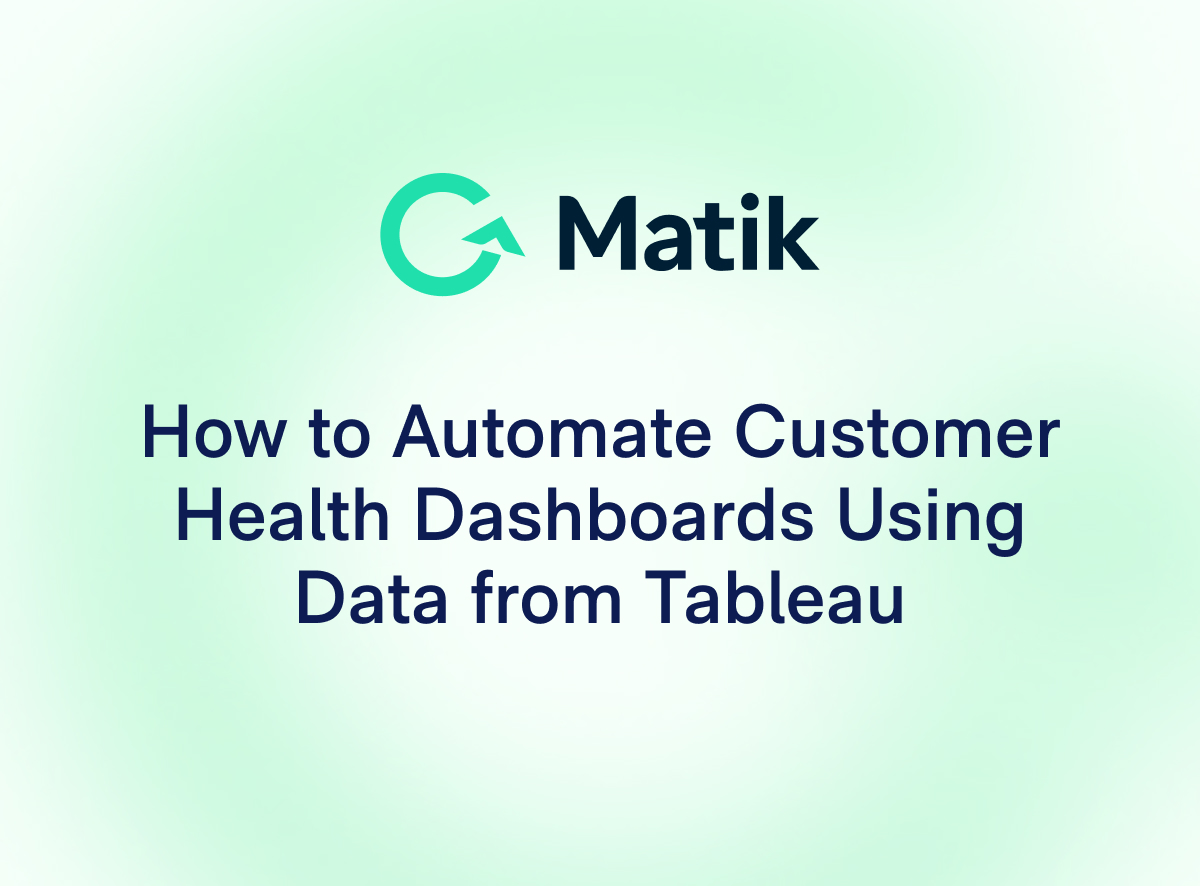Join Our Newsletter
Our team at Matik is thrilled to have attended Gainsight Pulse this year—we had a great time connecting with members of the customer success community. In case you missed it, Nik Mijic, our CEO and Co-Founder, co-hosted a session at Gainsight Pulse with Rosa Gandler, Customer Revenue Operations Director at Greenhouse. In the session titled “How to Use Data to Build Trust with Customers,” Nik and Rosa walked through how customer success teams can use data-driven storytelling to prove product value throughout the customer journey.
About the speakers
Rosa Gandler is the Director of Customer Revenue Operations at Greenhouse, an applicant tracking system and recruiting software that uses automation to help teams find, reach, and engage with top talent quickly and effectively. Rosa manages Greenhouse’s customer-facing revenue operations teams, including customer success.
Nik Mijic is the CEO & co-founder of Matik. Prior to Matik, Nik worked in various roles and companies that focused on helping customer success teams retain and grow customers. At LinkedIn, he built internal tools that helped them leverage LinkedIn data in their presentations and be more efficient while doing so. Nik was the first non-engineering hire at Bluenose Analytics, where they built a platform that used predictive analytics to engage at-risk customers and identify drivers of churn.
Customer success in an economic downturn
To start the session, Nik and Rosa explained the importance of customer success and retention in the midst of an economic downturn. As many organizations are re-evaluating their tech stacks and cutting budgets, it’s now more crucial than ever for customer success teams to find effective ways to communicate product value and ROI. At the same time, because customer acquisition is more costly than retention, customer success has the opportunity to be in the front seat for the first time.
The impact of data
Rosa explained how her team at Greenhouse is using data throughout the customer journey to build trust and retain customers: her team has specific data points that they deliver to customers based on their stage in the customer journey. By delivering the right data metrics at the right times, Greenhouse has been able to more effectively retain customers, build trust, and prove the value of their product.
Rosa provided three key examples of data-driven resources her team relies on to build customer trust, retain business, and prove product value, including:
- Objective mapping slides: A tactical, scalable data visualization that Greenhouse’s customer success team uses to help their customers see progress with the platform while working toward key goals and objectives.
- Benchmarking slides: Greenhouse also uses data visualizations to help customers understand benchmarks and comparisons. This helps their customers understand how certain metrics compare with industry standards, competitors, and previous performance.
- ROI slides: A data visualization that helps Greenhouse prove the value of their product by providing insights on user adoption, referrals, and more.
Rosa explained that her team builds out these data visualizations to create digestible, at-a-glance proof of product value that can be easily shared with customers. Through research, collaboration, and experimentation, CSMs can discover which data insights customers care about most and share them in an impactful way.
Navigating common data challenges
Nik and Rosa explained that while data-driven stories are crucial for building trust with customers, they can be challenging to build. One of the roadblocks that can get in the way of data-driven storytelling is siloed data—customer success teams often struggle to gain access to the data they need. To fix this, organizations must find an efficient way for CSMs to actually access key data insights, which requires cross-departmental collaboration and process automation.
Another problem that teams often face is blind spots throughout the data pipeline. To combat this, Nik and Rosa suggested iterating on data insights over time based on customer feedback. For example, Rosa explained how her team at Greenhouse started with just four essential key performance indicators. Once they established a process for how to consistently measure these, they continued to add more, and now they have access to more than 150 data insights that can be delivered as needed throughout the customer journey.
To round out the discussion, Nik and Rosa talked about the challenge of standardizing processes and maintaining consistency. With larger teams, especially in the current world of remote work, it can be difficult to ensure that every team member is sharing resources that are consistent with the company’s overall message and brand standards. Rosa explained that this can be solved by using templates and automating key customer-facing resources to ensure consistency across the board.
____________________
In summary, this session at Gainsight Pulse provided insight on how to build trust with customers through data, even in an economic downturn. By finding ways to efficiently build data visualizations that prove product value in a compelling and concise manner, customer success teams can foster credibility with the teams they serve. To see more from Gainsight Pulse, read Gainsight’s event recap here.
---
See Matik in Action—Request a Demo














